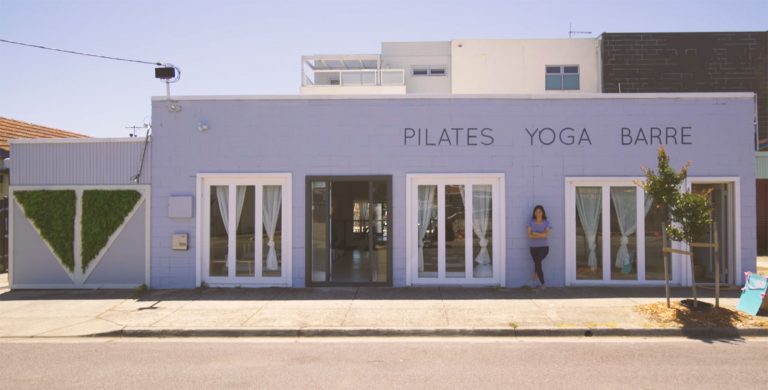Your 7-step guide to setting up a yoga studio

Opening a yoga studio requires a perfect balance of hustle and heart, but also a great business plan.
Let’s take a look at how to develop one…
1. Create a mission statement
The first step in creating a business plan for a yoga studio is writing a mission statement. Lisa Fitzpatrick, who runs Sacred Women’s Business Coaching, describes this as “the ideal version of what the business would be if you removed all fears and doubts”.
It should cover:
- what the studio stands for and what its values will be;
- the industry, ie who the studio will serve;
- the studio’s point of difference over competitors, whether that’s its location or specialised service and the key benefits to clients;
- where the studio will be in two to five years and how this will be achieved.
“Be clear on your values and don’t let the superficial world of social media sway you from offering an authentic yoga experience dedicated to the original and genuine teachings of yoga. Dream big here!” says Fitzpatrick, who helps clients create “heart-centred and sustainable success in business”.
2. Find a space and define the offering
Finding the right space is absolutely key, Fitzpatrick says, as there are so many variables, from location to cost to parking to lease length and lots more.
At an absolute minimum, ensure there is adequate airflow, temperature control and access to bathrooms, Fitzpatrick advises.
Next is identifying the studio’s exact offering, i.e. the products and services it will provide.
“You’ll need an inventory of planned classes, workshops, retreats and teacher training, as well as yoga props and yoga clothes.”
Having a specific offering is important, Fitzpatrick says, as is looking at the nearby competition. She cites the case of two clients who both opened yoga studios in proximity.

Having a clear mission statement will give you a sort of road map of where you want the business to go. Picture: Getty
“It could have been a highly competitive situation, however, both offered completely different yoga experiences.”
One offered a comfortable studio space with many props and the capacity for all body shapes and ages to feel welcome. It had classes for 50 and over clients and restorative, rest-based classes, as well as creative movement workshops and “kirtans”, which are singing nights.
“The other yoga studio was completely different in its brand promise, catering instead to people who wanted to ‘work hard’ and challenge themselves, and deliberately steering clear of any of the ‘spiritual’ talk and practices that many other studios offer.
“Both studios had completely different ‘who’ as their ideal students … and both did well.”
3. Select a name and do branding
Fitzpatrick says the combination of the name and branding creates a “brand promise” with clients about their experience with the business.
Emma Pugsley, who earlier this year opened Myall Wellbeing, which offers yoga, meditation, Pilates and massage, in Perth, agrees that the name is pivotal, as it sets the tone.
Pugsley had her name in her mind from day one. “Myall is a family name and also has the right connotations when it comes to wellbeing and ‘giving your all’.”
She also hired a consulting team to bring her brand to life and to ensure it was consistently applied across the business.

Having a definite idea of the kind of studio you want to create will help make it clear to potential customers. Picture: Getty
4. Complete market analysis
According to Fitzpatrick, market analysis is effectively an overview of the studio’s “who”.
“Will the yoga studio cater to middle-aged women in peri-menopause or young athletic people? Will the studio be asana-focused, i.e. more about the postures, or will it offer classes for complete beginners?”
This analysis should include a description of the studio’s “ideal client”, their economic demographics and preferred price point.
5. Do a marketing strategy
Decide on the marketing channels the yoga studio will use and what the key messaging will be.
Fitzpatrick says a SWOT analysis – which breaks down the strengths, weaknesses, opportunities and threats facing a business – is a good way to work out what to focus on.
Yoga studios often have success using social media platforms like Instagram and Facebook, which allow targeted advertising.

Make sure you know what other studios are doing in the area. Picture: Getty
6. Choose a business structure
Now, the boring stuff. Would-be yoga studio owners need to decide on what company structure they will use, whether it is sole trader, a partnership, company or a trust.
It’s an important decision because it determines the licenses required, how much tax will have to be paid, potential personal liability and many other things.
At this time, also think carefully about what key staff will be required and what insurance policies will have to be in place, Fitzpatrick says.
7. Crunch the numbers
A budget and detailed financial projections are the final steps. When crunching the numbers, be sure to look at:
- Start-up expenses
- Finance options
- Fixed costs
- Variable costs
- Projected income
This article from Realestate.com.au originally appeared as “How to set up your own yoga studio in 7 steps”.







